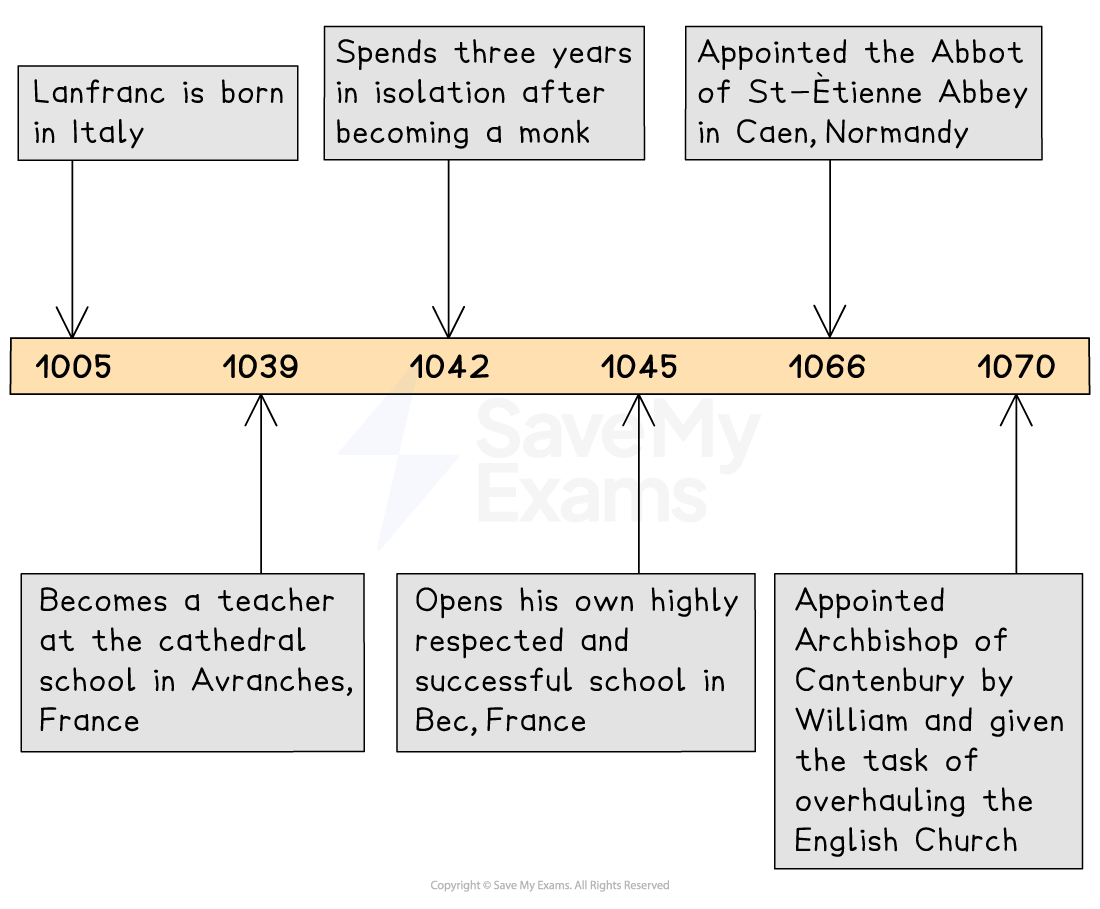Norman Reforms of the Church (AQA GCSE History): Revision Note
Exam code: 8145

Summary
Archbishop Lanfranc introduced widespread and far-reaching changes to the Church in England after he was appointed Archbishop of Canterbury in 1070. These changes affected the structure of the Church, the number and nature of Church buildings and the rules that its members had to follow. Perhaps his most important change was the introduction of the Church courts in 1076. This separated the legal authority of the church and the state.
Church leadership in the Norman Church
Once William’s place on the English Throne was secure, he set about reforming the English Church
The man he appointed to do this was Lanfranc who was appointed Archbishop of Canterbury in 1070
The Archbishop of Canterbury was the most senior and important position in the English Church
Lanfranc replaced Stigand who was widely seen as being too interested in securing personal wealth and power instead of serving the pope
Lanfranc’s appointment led to a power struggle with Thomas, the Archbishop of York
The Archbishop of York was the second most powerful position in the English Church
But Thomas had crowned William and believed this gave him primacy over LanFranc
Lanfranc ordered Thomas to swear loyalty to him and Thomas refused
William ordered Thomas to submit to Lanfranc’s authority
Thomas appealed to the pope but was forced to accept that Lanfranc was in charge
Lanfranc then oversaw widespread reforms to the existing Anglo-Saxon structure of the English Church
He replaced all of the Anglo-Saxon bishops except for Bishop Wulfstan of Worcester
Norman bishops were seen as being more likely to help Lanfranc make his changes
Lanfranc also introduced a new hierarchy for the English Church

Norman churches
Alongside the organisational changes to the English Church, the Normans also made wide-sweeping changes to the physical church buildings
Anglo-Saxon Churches were often wooden and the Normans viewed the cathedrals as being old-fashioned and unimpressive
By the year 1200, Westminster Abbey was the only Anglo-Saxon cathedral that had not been demolished and rebuilt
The churches and monasteries were rebuilt in a Romanesque architectural style
This includes features found on both Roman buildings and those found in Byzantium (modern-day Türkiye)
Features include rounded arches over doors and windows and being symmetrical in design
The spectacular cathedrals in Norwich, Ely, Winchester, Bury St. Edmunds and Durham were larger and more impressive than anything built in Anglo-Saxon England
The Normans believed building these cathedrals and churches demonstrated their superior culture and technology
Cathedrals were also built in important towns, such as Exeter, close to large population centres and where they were most needed

Source: https://commons.wikimedia.org/wiki/File:Durham_MMB_02_Cathedral.jpg (opens in a new tab)
Lanfranc’s reforms
Alongside the changes to the Church structure and buildings, Lanfranc made other changes to the way the English Church ran
He strictly enforced the rule that members of the clergy were not allowed to get married
Those who were already married were allowed to keep their wives
He stamped out simony and nepotism which had been common in the Anglo-Saxon Church
He introduced councils of bishops known as synods to help bring in his reforms effectively
At the Council of Winchester in 1076, Lanfranc established the Church courts
This meant that members of the clergy could no longer be tried in the normal, secular courts
Instead, they were tried by the synods as Lanfranc argued that secular courts had no authority over churchmen
This caused great anger amongst the wider population as the synod’s punishments were seen as less harsh than the normal court’s
The Church courts also weakened William’s power but he supported Lanfranc in making the changes
Banned the clergy from marrying or having sexual relationships, and the Council of Winchester ordered that only Church courts could try clergy for crimes.

Unlock more, it's free!
Did this page help you?